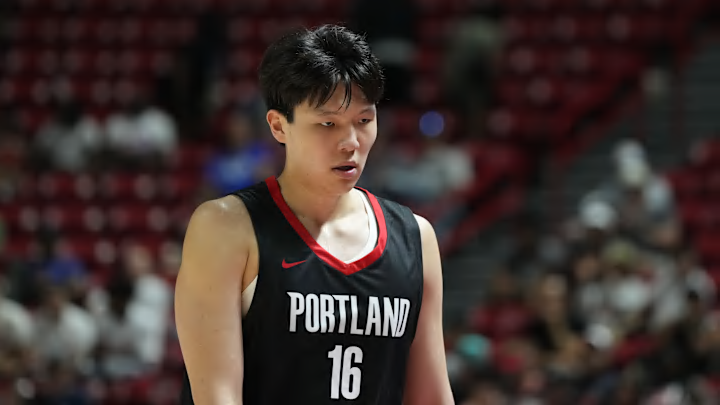Sam Quinn of CBS Sports recently ranked all 63 future first-round picks that have been traded. Coming in at No. 1 was the New Orleans Pelicans' latest mistake. The Pelicans made a puzzling draft-day trade (to put it gently), making an aggressive move to trade up to land another lottery pick, pairing No. 7 pick Jeremiah Fears with No. 13 pick Derik Queen.
Both come with their red flags, particularly Queen, who has defensive limitations given his frame and athleticism. But it's hard to fault New Orleans for taking a flier on two high-upside prospects. The primary issue isn't in the picks themselves; it's the steep price they had to pay to make that Fears-Queen duo a reality.
The New Orleans Pelicans' draft nightmare
The Pelicans traded the Atlanta Hawks the No. 23 overall pick (Asa Newell) and an UNPROTECTED 2026 first-round pick (MOST FAVORABLE of New Orleans or Milwaukee) to land Queen.
"The Pelicans had the fourth-worst record in the NBA last season. Their presumptive starting point guard is nursing a torn Achilles. There is not a starting-caliber center on the roster. They are integrating two rookies picked in the lottery, both of whom need the ball in their hands and neither of whom is a strong 3-point shooter. They play in the Western Conference. They have the worst front office in the NBA. Oh, and it comes attached to swap rights with the Bucks," Quinn wrote.
It's way too early to declare whether Fears and Queen were the right selections for New Orleans. But Queen needs to be special for them to get any return on investment.
That same thought process can be applied to the Blazers and any team that picked ahead of the Hawks in the draft. Why wouldn't the Pelicans be willing to offer the same exact deal to a team picking earlier?
Blazers need Yang Hansen to be special to justify missing out on Pelicans trade
From that standpoint, Portland needs Yang Hansen to be special to justify missing out on the top-ranked draft asset. That's certainly still on the table. Hansen showed flashes of his potential throughout a promising summer league with his passing, footwork, size, and even shot. He quickly won over those questioning why Portland would take a projected second-round pick just outside the lottery.
To be fair, the Blazers acquired draft capital by trading back with the Memphis Grizzlies. They landed a 2028 first-round pick (via Orlando) and two second-round picks to get the player they wanted all along. That was also the perfect spot for them to trade back to. The general manager of the Qingdao Eagles, Hansen's team in China, mentioned that the Brooklyn Nets gave Hansen a promise at pick No. 19.
Portland was on top of this unconventional pick, and its front office deserves credit for that. However, the Magic are well-positioned to be one of the best teams in the league by 2028. Meanwhile, New Orleans (or Milwaukee, depending on what happens with Giannis Antetokounmpo) could be one of the worst next season.
There's a scenario where the Pelicans just gave up projected No. 1 overall pick AJ Dybantsa to draft Derik Queen. That also means there's a scenario where Portland missed out on AJ Dybantsa to draft Yang Hansen.
That wide gap in draft capital makes it hard not to feel like the Blazers left some meat on the bone in terms of maximizing value. They could've taken the Pelicans' offer, traded up from pick No. 23, and come away much better off. And that's assuming Hansen even pans out as expected. It's possible his game doesn't translate from the CBA to the NBA, and concerns surrounding the competitiveness and physicality that made him a projected second-rounder prove to be true.
We have faith that Mike Schmitz and Co. made the right call with Hansen. But there's a lot more riding on that selection than many realize. The opportunity cost of missing out on that 2026 pick will be challenging to justify if Hansen doesn't pan out.
